
How to Use ESP32-2432S028: Examples, Pinouts, and Specs
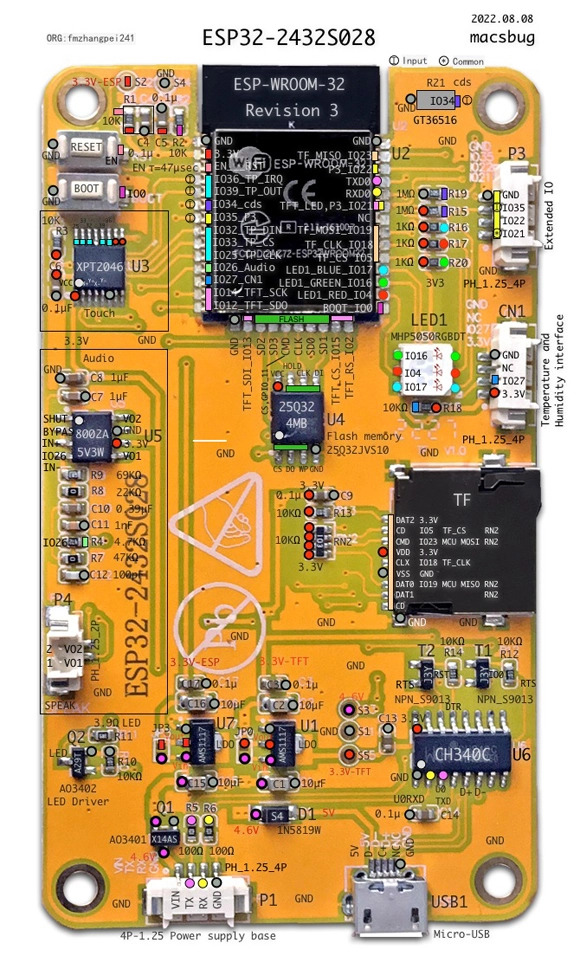
 Design with ESP32-2432S028 in Cirkit Designer
Design with ESP32-2432S028 in Cirkit DesignerIntroduction
The ESP32-2432S028 is a versatile and powerful microcontroller module designed for IoT and embedded system applications. It features a dual-core processor, integrated Wi-Fi and Bluetooth capabilities, and a 2.8-inch TFT LCD display for user interaction. With its ample GPIO pins and support for various peripherals, the ESP32-2432S028 is ideal for projects requiring wireless communication, graphical interfaces, and real-time processing.
Explore Projects Built with ESP32-2432S028
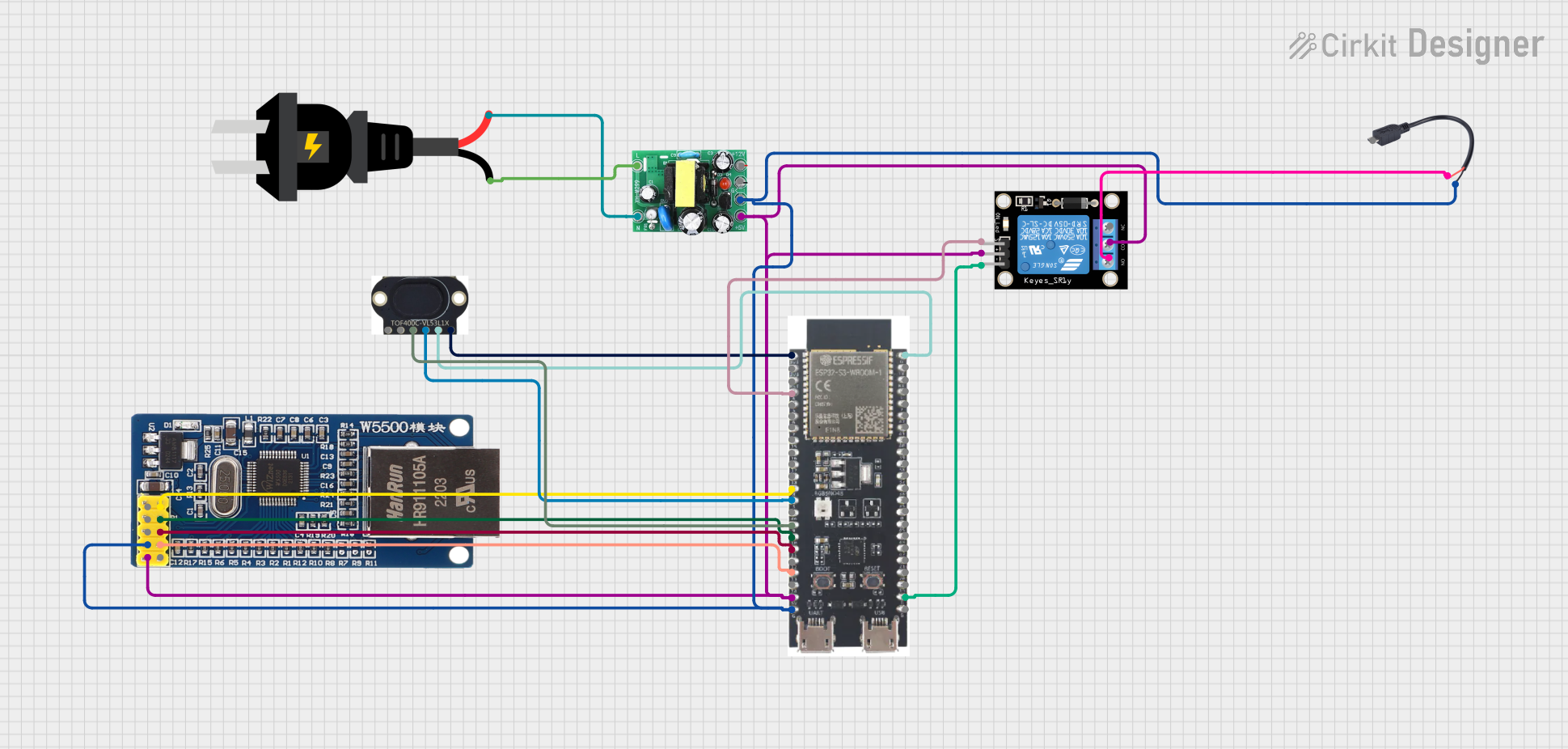
 Open Project in Cirkit Designer
Open Project in Cirkit Designer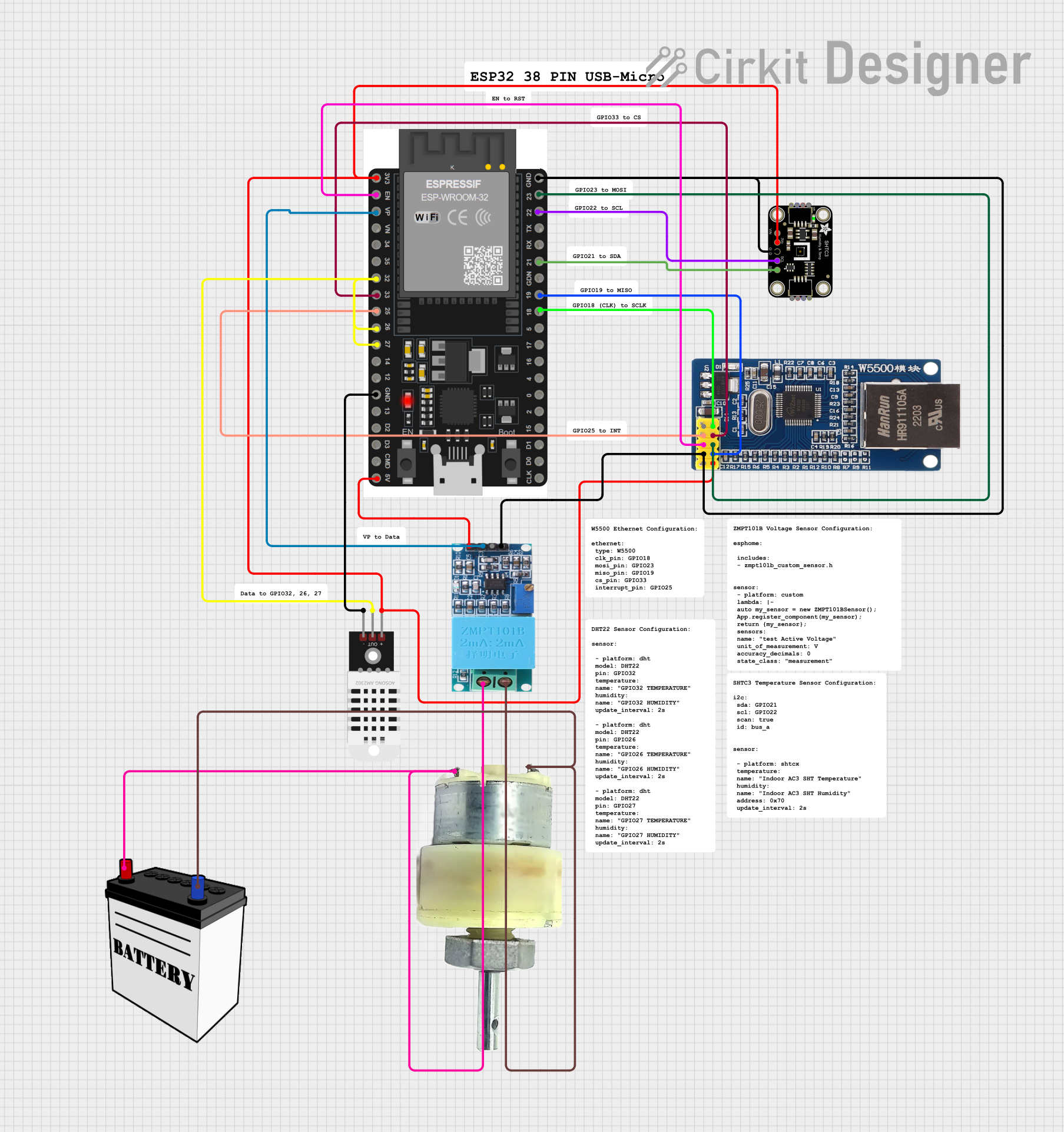
 Open Project in Cirkit Designer
Open Project in Cirkit Designer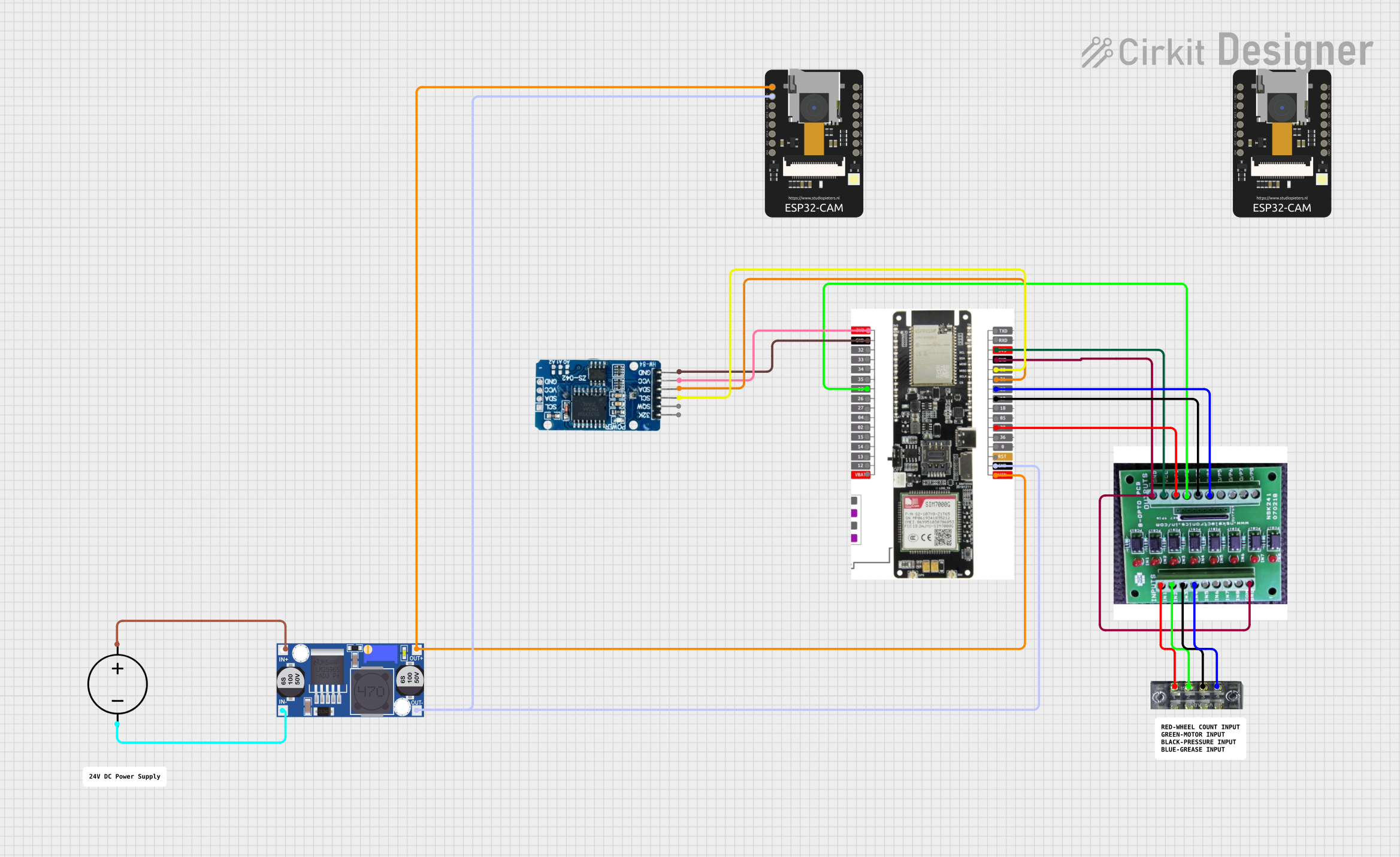
 Open Project in Cirkit Designer
Open Project in Cirkit Designer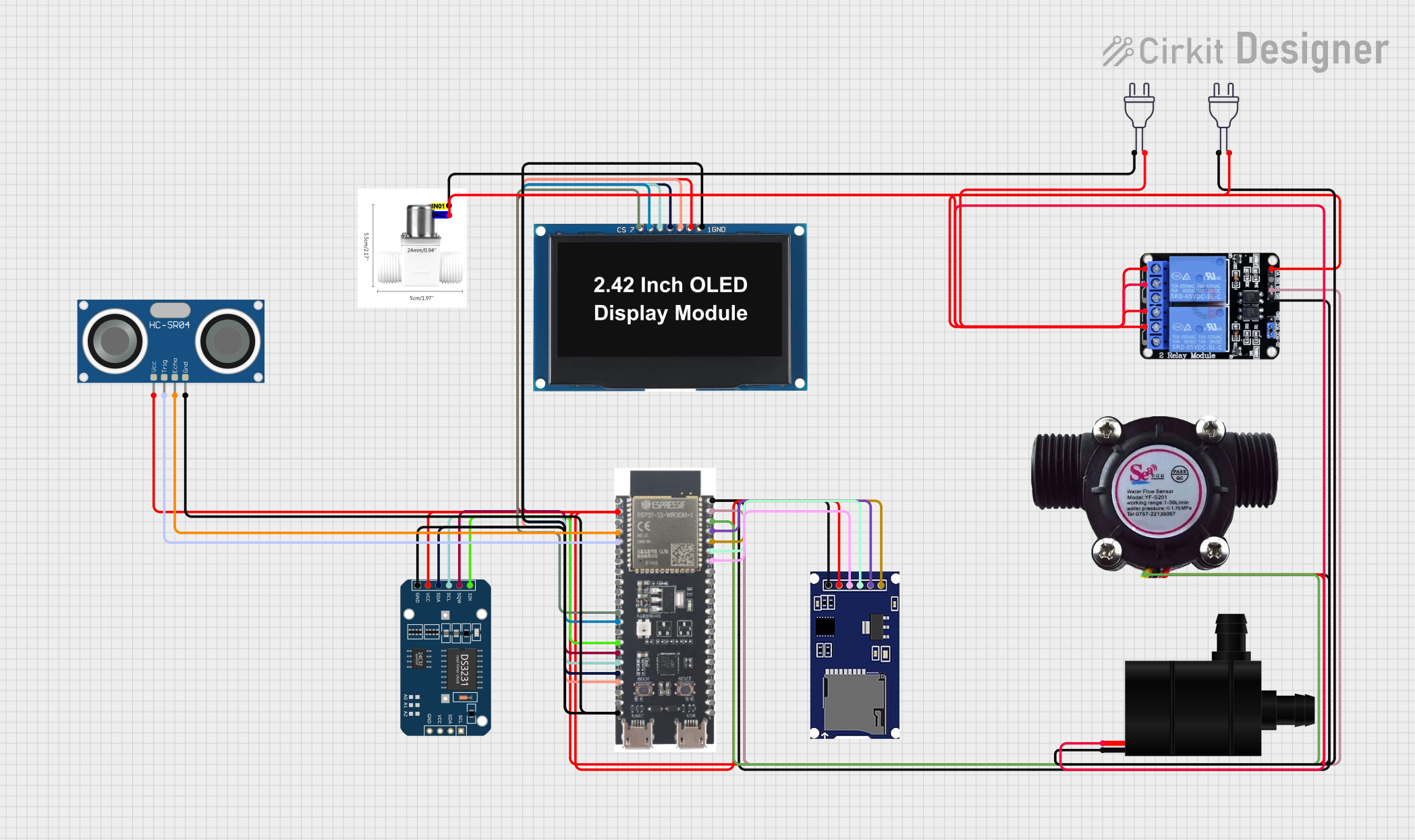
 Open Project in Cirkit Designer
Open Project in Cirkit DesignerExplore Projects Built with ESP32-2432S028

 Open Project in Cirkit Designer
Open Project in Cirkit Designer
 Open Project in Cirkit Designer
Open Project in Cirkit Designer
 Open Project in Cirkit Designer
Open Project in Cirkit Designer
 Open Project in Cirkit Designer
Open Project in Cirkit DesignerCommon Applications and Use Cases
- IoT devices and smart home automation
- Industrial control systems
- Wearable technology
- Data logging and monitoring systems
- Wireless communication hubs
- Graphical user interfaces for embedded systems
Technical Specifications
Key Technical Details
| Parameter | Specification |
|---|---|
| Microcontroller | ESP32 dual-core processor |
| Clock Speed | Up to 240 MHz |
| Flash Memory | 4 MB |
| SRAM | 520 KB |
| Wireless Connectivity | Wi-Fi 802.11 b/g/n, Bluetooth 4.2 |
| Display | 2.8-inch TFT LCD, 320x240 resolution |
| GPIO Pins | 28 |
| Operating Voltage | 3.3V |
| Input Voltage Range | 5V (via USB) or 3.3V (via pin) |
| Communication Interfaces | UART, SPI, I2C, PWM, ADC, DAC |
| Power Consumption | ~160 mA (active), ~10 µA (deep sleep) |
| Dimensions | 85mm x 55mm x 12mm |
Pin Configuration and Descriptions
| Pin Number | Pin Name | Description |
|---|---|---|
| 1 | GND | Ground connection |
| 2 | 3V3 | 3.3V power output |
| 3 | VIN | Input voltage (5V via USB or external source) |
| 4 | GPIO0 | General-purpose I/O, boot mode selection |
| 5 | GPIO1 (TX0) | UART0 transmit pin |
| 6 | GPIO3 (RX0) | UART0 receive pin |
| 7 | GPIO4 | General-purpose I/O, supports PWM and ADC |
| 8 | GPIO5 | General-purpose I/O, supports SPI |
| 9 | GPIO12 | General-purpose I/O, supports ADC and touch |
| 10 | GPIO13 | General-purpose I/O, supports ADC and touch |
| 11 | GPIO14 | General-purpose I/O, supports PWM and ADC |
| 12 | GPIO15 | General-purpose I/O, supports PWM and ADC |
| 13 | GPIO16 | General-purpose I/O, supports UART and SPI |
| 14 | GPIO17 | General-purpose I/O, supports UART and SPI |
| 15 | GPIO18 | General-purpose I/O, supports I2C and SPI |
| 16 | GPIO19 | General-purpose I/O, supports I2C and SPI |
| 17 | GPIO21 | General-purpose I/O, supports I2C |
| 18 | GPIO22 | General-purpose I/O, supports I2C |
| 19 | GPIO23 | General-purpose I/O, supports SPI |
| 20 | GPIO25 | General-purpose I/O, supports DAC and ADC |
| 21 | GPIO26 | General-purpose I/O, supports DAC and ADC |
| 22 | GPIO27 | General-purpose I/O, supports ADC and touch |
| 23 | GPIO32 | General-purpose I/O, supports ADC and touch |
| 24 | GPIO33 | General-purpose I/O, supports ADC and touch |
| 25 | GPIO34 | Input-only, supports ADC |
| 26 | GPIO35 | Input-only, supports ADC |
| 27 | GPIO36 | Input-only, supports ADC |
| 28 | GPIO39 | Input-only, supports ADC |
Usage Instructions
How to Use the ESP32-2432S028 in a Circuit
Powering the Module:
- Connect the VIN pin to a 5V power source (e.g., USB or external power supply).
- Alternatively, supply 3.3V directly to the 3V3 pin. Ensure the power source is stable.
Connecting Peripherals:
- Use the GPIO pins to connect sensors, actuators, or other peripherals.
- For communication, use UART, SPI, or I2C interfaces as required by your application.
Programming the ESP32:
- Use the Arduino IDE or ESP-IDF (Espressif IoT Development Framework) to program the module.
- Connect the module to your computer via USB for programming and debugging.
Using the TFT Display:
- The integrated 2.8-inch TFT LCD can be used for graphical output.
- Libraries like
TFT_eSPIorAdafruit_GFXcan simplify display programming.
Important Considerations and Best Practices
- Voltage Levels: Ensure all connected peripherals operate at 3.3V logic levels to avoid damaging the module.
- Deep Sleep Mode: Use deep sleep mode to conserve power in battery-powered applications.
- Boot Mode: To enter programming mode, hold the BOOT button while resetting the module.
- Wi-Fi and Bluetooth: Avoid using both Wi-Fi and Bluetooth simultaneously for high-bandwidth applications, as they share the same radio.
Example Code for Arduino IDE
The following example demonstrates how to display text on the TFT screen and connect to Wi-Fi:
#include <WiFi.h>
#include <TFT_eSPI.h> // Include the TFT library
// Wi-Fi credentials
const char* ssid = "Your_SSID";
const char* password = "Your_PASSWORD";
// Initialize the TFT display
TFT_eSPI tft = TFT_eSPI();
void setup() {
// Initialize serial communication
Serial.begin(115200);
// Initialize the TFT display
tft.init();
tft.setRotation(1); // Set display orientation
tft.fillScreen(TFT_BLACK); // Clear the screen
tft.setTextColor(TFT_WHITE, TFT_BLACK); // Set text color
// Display a message on the screen
tft.setCursor(10, 10);
tft.setTextSize(2);
tft.println("Connecting to Wi-Fi...");
// Connect to Wi-Fi
WiFi.begin(ssid, password);
while (WiFi.status() != WL_CONNECTED) {
delay(500);
Serial.print(".");
}
// Display connection status
tft.fillScreen(TFT_BLACK);
tft.setCursor(10, 10);
tft.println("Wi-Fi Connected!");
tft.println(WiFi.localIP()); // Display the IP address
}
void loop() {
// Add your main code here
}
Troubleshooting and FAQs
Common Issues and Solutions
Module Not Powering On:
- Ensure the power supply provides sufficient current (at least 500 mA).
- Check the connections to the VIN or 3V3 pin.
Wi-Fi Connection Fails:
- Verify the SSID and password are correct.
- Check if the Wi-Fi network is within range.
TFT Display Not Working:
- Ensure the display initialization code matches the hardware configuration.
- Verify the connections between the ESP32 and the display.
Programming Errors:
- Ensure the correct board and port are selected in the Arduino IDE.
- Hold the BOOT button while resetting the module to enter programming mode.
FAQs
Can I use 5V peripherals with the ESP32-2432S028?
No, the GPIO pins operate at 3.3V logic levels. Use a level shifter for 5V peripherals.What is the maximum range of the Wi-Fi module?
The Wi-Fi range is approximately 30 meters indoors and 100 meters outdoors, depending on obstacles.How do I update the firmware?
Use the Arduino IDE or ESP-IDF to upload new firmware via USB.Can I use the module without the TFT display?
Yes, the ESP32-2432S028 can function as a standalone microcontroller without using the display.